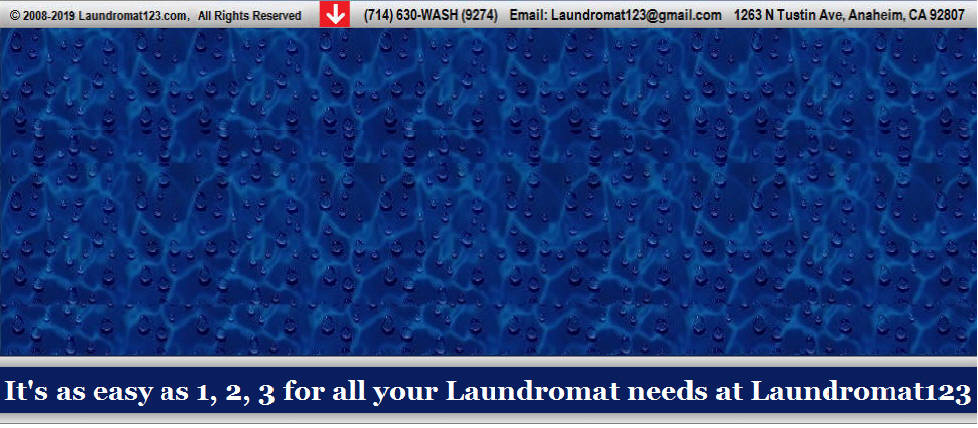
WHAT IS THE RIGHT TIME TO INCREASE PRICING ON WASHERS AND DRYERS?
"I can't seem to make any money!" my friend and fellow coin laundry owner said to me recently while I visited him at his Laundromat. "I do the work and the only one who benefits is the landlord, the utility companies, the parts houses, the mechanics, the janitors, and the rubbish haulers" he continued. "I wake up early, drive to my Laundromat, clean the floors, clean the washers, and do all the repairs on the washers and the dryers. Then I'm off to buy parts and vending products, and then back to the store to stock the vending machines, handle customer complaints and counsel my attendant about his pay and problems" he went on. "Some days I wait for hours for the rooter company to come and clear the sewer lines, for a mechanic to fix bearings on a front loader that's out of service or I collect quarters and stock the change machine. At home, I spend a few hours writing checks for the bills and refunds." "We all know there's a lot of work in owning a Laundromat," I responded, "but it costs a lot to wash a load, and you listen to every sales agent and scare tactic that tells you to lower prices to compete! You lowered your wash prices to 75¢ when that new store opened" I went on. "You didn't drive your competitors out of business and now you can't afford to fix your old washers, let alone buy new ones!" "You should be fed up" I continued. You're entitled to make a living, but you can't make any money giving away your product. If you were working for a boss that didn't pay, you'd quit! Why do you work in your own business for free?" I said. "You can't make any money at the prices you charge, raise your wash prices for a top loader, and lower the minutes of dry time or get out of the business!" "Close your laundry or sell it to me" I finished. On the drive home from my friend's Laundromat I thought about what I had said. "Raise prices or get out of the business!" Tough decision, what are you going to do?
WHAT SHOULD I DO IF I HAVE SOAP BACKING UP THROUGH DRAINS AND TOILETS?
It is likely that the "backing up" of the drains is actually a result of too much soap that bubbles put in the washers by your customers and the results foam out onto the floor and later turn to water as the foam dissolves. This would explain why the problem doesn't happen every time. It is unlikely the size of the drain would be able to control an over-soap situation, since too much soap would overwhelm any drain installed; the triggering level from a larger drain might be slightly less but the result would be the same if someone significantly over-soaped.
Over-soaping problems are more common in the modern "green" Laundromat as machines use less water for energy savings and the same volume of chemicals are introduced (soap) resulting in a froth of soap being produced. More mechanical action (speed of agitation) from front load washers, the same chemicals (soap) and decreased diluting of the water results in the creation of more froth. It's very difficult to explain to customers that the new generation of washers needs less soap to do its job. It is an educational process, but in the meantime here is my suggested solution:
1. If the problem is occasional water behind the washers that causes water to migrate to your neighboring businesses, the first solution attempted should not be an expensive choice, such as increasing the drain size.
2. The first step is to control the occasional problem by waterproofing the wall between the units using a product like Henry's water seal that will stop the water from spreading into to the neighbors suite.
3. Spread the black goop with a putty knife or thick-bristled brush in a two or three inch wide strip of sealant on a clean, dry floor and up the wall the same two or three inches all along the wall behind the washers. This is the cheapest way to control the problem.
4. If the over-soaping is really extreme, you can control the spread of the backup froth by creating a "holding pen" behind your washers made out of bricks that encircles an area around the back of the washers one brick high. Seal and mount to the floor. This will hold a sufficient volume of water to control the occasional overflow and allow the overflow to evaporate in a holding pond or be directed by the design of the bricks to a floor drain.
5. The floor drains alone will not control the problem since the drop in the floor will not be severe and it is likely that the froth will not flow easily to a floor drain.
6. When soap starts to show up into the toilet of the store next door you have someone who has seriously over-soaped. Increasing the size of the drain will have limited benefit. Increasing the size of the vent will also have limited benefit. The vents are necessary to create air pressure for proper draining. I believe these over-soaping problems are a result of a lack of educational effort on the part of the Laundromat owner.
7. This is the recommended solution: first, goop the wall, at a cost of about $25.00 for materials and second make a brick "holding pen" at a cost of about $100.00 only if the first solution does not solve the problem.
8. You can get a large bottle of liquid Downey since it quickly breaks down soap suds and pour some into each washer to break down the soap that remains inside a washer after a use. The residue from the previous over-soaping is often combined with the soap of a new over-soaping customer and really adds to the problem. Downey added to a washer during the suds episode will quickly control the situation.
Q. WHAT KIND OF LEGAL STRUCTURE SHOULD I HAVE FOR MY LAUNDROMAT?
D
etermining the operation's legal structure is one of the first tasks an owner faces. The options are to form a sole proprietorship, a partnership, or a corporation. Given that each form has specific advantages and disadvantages. The choice must be made in accordance with the prospective owner circumstances, needs, and goals. In acting alone, the operator is likely to engage in the most widespread form of small business organization—the sole proprietorship. Addition of a partner with capital and/or talents of use to the business will typically lead to a partnership. In either case, income is taxed to the owner, not the business. Forming an LLC or some type of corporation, such as Subchapter S, is another possibility. An attorney can help clarify the many technical aspects of selecting the legal form of business organization.
Q. DO I NEED SPECIAL INSURANCE FOR A LAUNDROMAT?
Laundromat insurance policies generally address two main areas of concern: damage to the property and public liability. A basic insurance package might include the following: Fire insurance covers damage to the premises, equipment and inventory caused by fire, explosion, wind, riot, or smoke. Coverage for vandalism and malicious mischief is also desirable. Business interruption insurance compensates for revenue lost during a temporary halt in business caused by fire, theft, or illness. Public liability insurance covers accidents on store premises, sidewalk, and parking lot; damage to property of others; and expenses of defending the owner in a lawsuit. Additional types of coverage, such as the following, are desirable to protect the owner and employees,if any. "Key person" insurance compensates the business when any partners or persons essential to managing the operation become disabled or die. Workers' compensation insurance, mandatory in California, covers employees for injuries and loss of pay related to accidents on the job. If changes, such as retrofitting, are made to washers and dryers, the operator should review the insurance policy to make sure the equipment is still covered.
Q. WHAT ARE THE STORE HOURS FOR MOST LAUNDROMATS?
Stores usually are opened for business between 6 A.M. and 7 A.M., and closed between 9 P.M. and Midnight. A few stores are open for 24 hours. Those Laundromats equipped with automated opening systems have the doors unlock and the lights come on at a preset time each morning. The cleaning contractor or your employee upon leaving each night locks the entry doors.
Q. SHOULD I DO ANY ADVERTISING?
Yes. "Advertising directly increases the volume of our store," one successful operator claims. Increased competition among Laundromats underscores the importance of advertising and promotion not only to inform potential customers of the store’s professional facilities and services but also reinforce current customer's reasons for returning. An owner who steadily boosted his advertising allocation to almost 5% of gross currently reports sales volume increases of 20% in a year. Handbills are a widely favored advertising medium because they are relatively cheap and generally have a good return when distributed in the Laundromat's area. For example, when a new store is opened or you want to promote the installation of new equipment, you should distribute between 5,000 to 20,000 flyers in a one-mile radius of the store. Some operators circulate handbills at street fairs, parking lots or organizational meetings near the new store, and report a good return on this advertising investment. Community newspapers and advertising circulars or "shoppers" in urban areas enable the operator to advertise in specific sections of the city. The most cost-effective ads are generally those that appear regularly, since the cost typically declines with the frequency of the ad. Signs inside the store and the exterior store sign help build store image at the point of sale and provide continuous advertising for store services.
Q. WHAT ABOUT DROP-OFF OR "FLUFF AND FOLD" LAUNDRY SERVICES?
If the store hires a full-time attendant, one avenue of diversification might be drop-off-laundry service. "Fluff and Fold," as it is also termed, meets the needs of busy customers willing to pay for the store's labor. Price per pound charge averages $1.00 to $1.50, but ranges from 80¢ to $1.70. The attendant uses store funds to operate the machine and is then responsible for folding and wrapping the customer's laundry, typically offering one-day service.


OPERATING A LAUNDROMAT BASICS


